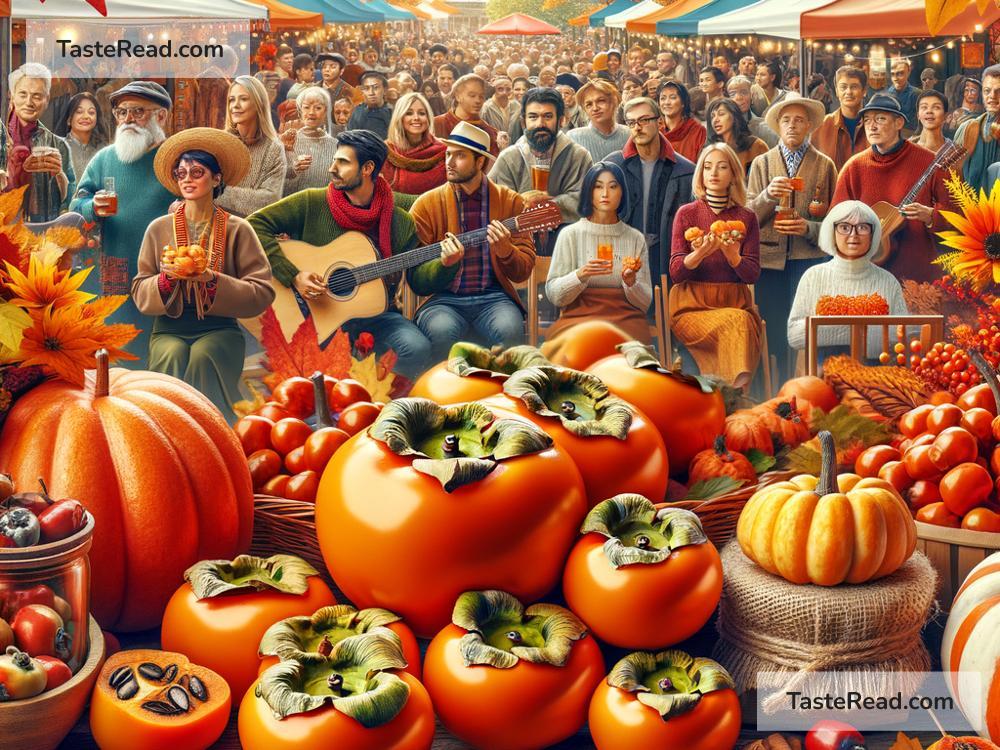The Surprising Link Between Persimmons and Autumn Festivals
As the air grows cooler and the leaves turn vibrant hues of orange, red, and yellow, one fruit quietly makes its way onto tables, menus, and market stands: the persimmon. While apples and pumpkins often steal the spotlight during autumn, persimmons hold a unique place in many cultures and traditions worldwide. Did you know that this sweet, orange fruit has a surprising connection to autumn festivals? Let’s explore how persimmons became a seasonal favorite and their role in celebrations during this magical time of year.
What Are Persimmons?
If you’re not familiar with persimmons, they’re small, round or oval-shaped fruits with smooth orange skin. Some persimmons are sweet and mild, while others can taste bitter unless they’re fully ripe. The two most common varieties you’ll find are the Fuyu and the Hachiya. Fuyu persimmons are firm and can be eaten like apples, while Hachiya persimmons are softer, with a pudding-like texture.
Persimmons grow on trees and are typically harvested in late autumn, which makes them perfect for seasonal celebrations. Their bright orange color fits right in with the warm tones of fall, making them a visually appealing addition to autumn tables and traditions. But there’s more to persimmons than just their taste and appearance—they also carry cultural significance in many parts of the world.
Persimmons in Asian Autumn Festivals
Persimmons have been grown and enjoyed for thousands of years in Asia, especially in countries like Japan, China, and Korea. These fruits aren’t just popular as snacks; they also play starring roles in autumn festivals.
In Japan, persimmons, known as kaki, are deeply tied to autumn. The harvest season for persimmons often overlaps with the celebration of cultural festivals like Tsukimi, the moon-viewing festival. During Tsukimi, people gather to admire the beauty of the full moon while enjoying autumn foods and seasonal fruits, including persimmons. Persimmons are not just food—they’re often used as decorations, thanks to their brilliant orange color symbolizing warmth and abundance during the cool months.
Similarly, in Korea, persimmons are tied to traditions surrounding Chuseok, the Korean harvest festival. Chuseok is a time to give thanks for the year’s harvest and to honor ancestors. Persimmons are used in offerings or placed on ritual altars as symbolic gifts to forebears. In Korea, dried persimmons, known as gotgam, are also popular during autumn festivals and are often served as sweet treats or used in desserts.
China, too, has a history of celebrating persimmons during the autumn months. The fruit is believed to signify good fortune, prosperity, and happiness. During Mid-Autumn Festival, persimmons may complement mooncakes, tea, and other seasonal delicacies, bringing good vibes and delicious flavor.
Persimmons in Other Cultures
While persimmons are most famously tied to Asian traditions, they’ve also made their way into other celebrations and cuisines. In Italy, where persimmons are called cachi, they’re harvested in late autumn and turned into jams, puddings, or even paired with cheese for a festive treat. In Italy’s rural communities, persimmons are seen as a symbol of abundance, aligning perfectly with the themes of thanksgiving and harvest that characterize autumn festivals.
In the United States, persimmons aren’t as prominently featured in fall traditions, but they have their own unique role. In some southern states, particularly in places like Kentucky, people use persimmon seeds to predict winter weather—an old folklore custom. When people cut open a persimmon seed, the shape inside (often resembling a spoon, fork, or knife) is said to indicate how harsh or mild the upcoming winter will be. It’s not a scientific method, but it’s a fun and quirky tradition that brings communities together during the fall.
Why Persimmons Are Perfect for Autumn
So, what makes persimmons such a perfect fruit for autumn festivals? First, their harvest season aligns perfectly with autumn. The fruit ripens just as the weather starts to cool, making it a fresh and seasonal choice for celebrations.
Second, their sweet, comforting flavor pairs beautifully with the other foods we enjoy during autumn—think nuts, spices, and baked goods. Persimmons can be eaten fresh, dried, or even baked into cakes and pies, making them versatile and easy to incorporate into festive meals.
Finally, persimmons’ bright orange color feels like a reflection of the season itself. Their appearance reminds us of fall leaves and cozy moments by the fire.
Bringing Persimmons Into Your Autumn Celebrations
If you’ve never tried persimmons before, autumn is the perfect time to give this fruit a chance. Add sliced fresh persimmons to your salads for a sweet twist, or bake them into muffins and bread for a seasonal treat. You can also enjoy dried persimmons as a healthy snack or blend persimmon puree into smoothies or desserts.
As you enjoy autumn’s festivities—whether it’s Thanksgiving, Halloween, or a local harvest celebration—consider adding this underrated fruit to your traditions. Not only will you add a dash of color and flavor to your meals, but you’ll also be connecting to a rich history of cultural traditions.
In the end, persimmons aren’t just a fruit—they’re a symbol of the season, a nod to the harvest, and a delicious addition to the way we celebrate the beauty of autumn. So next time you see persimmons at the market, think about their surprising link to autumn festivals and take home a taste of fall!


